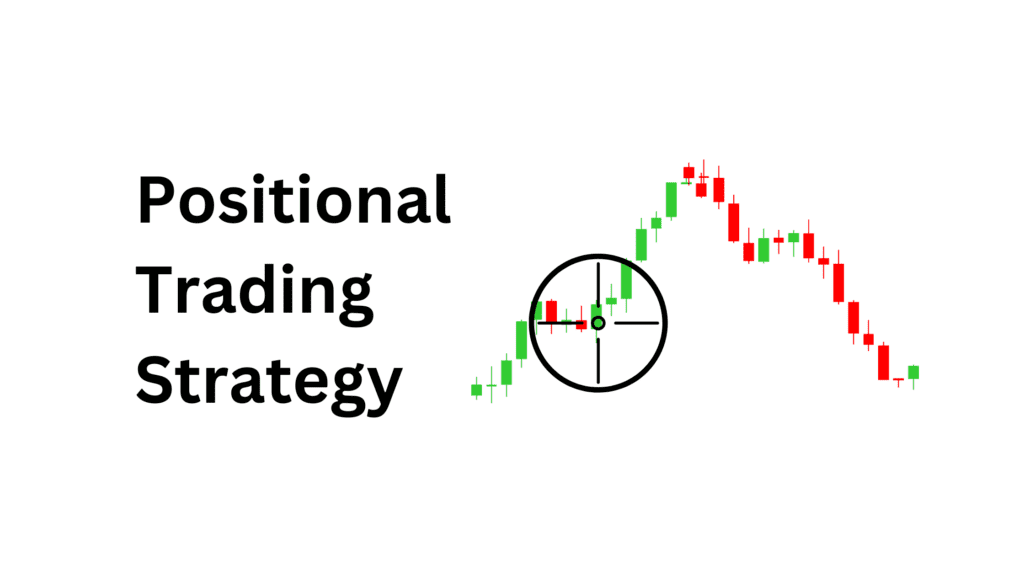I. Introduction
Have you ever heard of positional trading? If not, but want to learn about it then we are right here to help. In this blog post, we will discuss a brief guide on positional trading and its pros and cons.
A. An overview of positional trading
Positional trading is basically a long-term trading approach that focuses on the long-term holding of the stocks. This helps them avoid short-term market fluctuations. In positional trading, you can hold stocks for a good amount of time, which can be months or years.
B. The importance of understanding different trading styles
If you are a newbie or a budding investor, you must focus on learning about different trading styles. Because understanding different types of trading styles enables you to find your own unique trading approach that is suitable for your investment portfolio and your investment objectives.
II. What is positional trading?
In this section, we examine what positional trading is more closely and try to make sense of how it differs from other trading styles.
A. Definition and basic concept
By definition, positional trading refers to an investment strategy or approach that involves buying or holding a stock for the long term. So, the basic concept of positional trading is to identify an emerging market trend and stick to it by staying invested in it to make the most profit from the trend.
B. How it differs from other trading styles
Positional trading is quite different from other trading styles, such as day trading or swing trading. For example, positional traders hold stocks for a long time to benefit from market trends. On the other hand, both day trading and swing trading try to capitalize on short-term swings or fluctuations in asset price movements.
C. Typical time frames for positional trading
There are several timeframes that are used for positional trading. The choice of timeframe for positional trading may vary from one trader to another based on their individual preferences. The most popular and widely used timeframes for positional trading may include 60-minute charts, daily charts, and weekly charts.
III. How positional trading works
Before we look at the different pros and cons of this trading approach, it is vital that we try to understand how exactly it works. In this section, we try to do just that.
A. Identifying trade opportunities
If you are planning to invest in positional trading, you must understand how it works. Positional trading works by first identifying trade opportunities. It uses technical and fundamental analysis to identify the trade opportunity.
1. Use of technical and fundamental analysis
Positional trading typically involves the use of technical and fundamental analysis. It comprises the benefits of both technical data analysis and fundamental analysis of the market and stock price movement to identify the ideal trading opportunities that are suitable for long-term investments.
2. Setting entry and exit points
The identification of suitable trading opportunities in market positional trading also helps in setting entry and exit points for the trade. Setting up the entry and exit points for the investment is one of the crucial parts of identifying the best trading opportunities.
B. Trade execution and management
The next part of positional trading includes trade execution and management. In the positional trading approach once one identifies the right trading opportunities through technical and fundamental analysis one begins the trade execution process.
1. Position sizing and risk management
The positioning trade executes the trade by position sizing. Here, position sizing refers to the size of the position within a specific portfolio or the amount of money an investor is going to invest. Investors use position sizing to identify how many stocks they can buy which ultimately helps them in investment risk management.
2. Monitoring and adjusting positions
Once the position sizing is done the investors of positional trading have to monitor and adjust the positions from time to time to mitigate market risks and ensure higher profits. It is primarily important for positional trading because they hold stocks for long periods to reap the maximum profit of the trend.
C. Examples of positional trading strategies
With proper examples, you will be able to understand the concept of positional trading better. There are mainly two types of positional trading strategies used by investors: trend following and momentum trading.
1. Trend following
Trend following is one of the most popular and widely used positional trading strategies most positional traders use. In trend following strategy position traders identify an emerging market trend by using a technical and fundamental analysis. Then they execute the trade and hold the positions until the trend ends to make the most profit from the trend.
Read More: Setting Appropriate Position Sizing
2. Momentum trading
Another popular strategy used for positional trading is momentum trading. In momentum trading strategy the position investors buy securities with rising market movement and hold them until they think they have reached the peak. Then they sell these securities with the change in the momentum and earn profit.
Read More: Crypto Heatmap | Crypto Coins Heatmap
IV. Pros of positional trading
Now let’s look at some of the advantages of positional trading. While there are many, we will focus on the main ones.
A. Reduced stress and time commitment
Positional trading has multiple benefits which include reducing stress and time commitments. This manifests in two ways:
1. Less frequent monitoring required
As a part-time trader, you might feel it’s overwhelming to monitor your investments frequently. In such cases, positional trading can be a blessing as it doesn’t require frequent or regular monitoring of the stocks or securities you are holding on to.
2. Greater flexibility for traders with full-time jobs
Positional trading also allows greater flexibility for traders with full-time work responsibilities. It’s primarily because you hold stocks or securities for the long term and do not need regular monitoring.
B. Potential for higher returns
Another popular benefit of investing in positional trading is the possibility of higher returns on investment.
1. Capitalizing on longer-term trends
The primary focus of positional trading is to invest in trends and hold them for the long term to make greater profit from the trend. Therefore, positional trading always focuses on capitalizing on long-term trends and helps you avoid short-term price fluctuations or volatility and look for long-term gains.
2. Leveraging market moves over extended periods
Positional trading brings higher returns by leveraging market moves over an extended period of time. When you invest in securities for a longer period of time you can easily avoid short-term volatility and gain higher returns.
C. Less impact from short-term market fluctuations
Lastly, when you invest in positional trading approaches you can easily prevent the impacts of short-term market fluctuations.
1. Focus on long-term market trends
To reduce the impact of short-term market fluctuations, position trading mostly focuses on long-term market trends and invests for a longer period.
2. Reduced influence of daily volatility
Investing with a positional trading approach also helps to reduce the influence of daily volatility. This is again because positional trading focuses on long-term trends and holds securities for an extended period for higher return and lower risk.
V. Cons of positional trading
While there are various advantages of positional trading, there are also a few cons that you should make note of.
A. Exposure to market risk over longer periods
Although positional trading has multiple benefits it is still not free from limitations. One of the primary cons of this trading approach is exposure to market risks for longer periods.
1. Impact of major market events
As the positional trading strategies tend to hold the investments for a longer time they also have the higher impact of any major market events. This is one of the most common drawbacks of long-term investments.
2. Potential for larger drawdowns
Longer exposure to market risk is also directly linked to the higher potential for larger drawdowns due to the higher impact of any major market events.
C. Higher capital requirements
Another common limitation of positional trading is the requirement for higher capital for investment. This manifests in two ways:
1. Need for sufficient margin
As positional trading strategies expose the traders to long-term market risks they make it mandatory to have a sufficient margin to avoid short-term market fluctuations.
2. Impact of overnight fees and swaps
Also, positional trading is subject to overnight changes in fees and swaps that require higher capital to balance the expanse and continue investing for longer periods for gains.
Read More: Surge in liquidation of short positions reported
D. Possible missed short-term opportunities
Last but not least, as positional trading focuses on long-term investment they tend to miss short-term profits from the investment.
1. Limited ability to exploit short-term price movements
Positional trading is primarily focused on long-term investments. As a result, it has a very limited ability to benefit from short-term price fluctuations.
2. Opportunity cost of holding positions
As positional trading holds stock or securities for longer periods it costs short-term opportunities to make a profit from the same trend.
VI. Key skills and tools for successful positional trading
Key skills and tools for successful positional trading include technical analysis, trend identification, and risk management. In this section, we cover some of these to help get you started.
A. Analytical skills
The most crucial skill required for positional trading is the ability to analyze. Both technical analysis and fundamental analysis are important for understanding market dynamics and trends. It will also help one understand when to hold a position and when to sell an asset. Tools like moving averages, Fibonacci retracements, and oscillators help traders gauge entry and exit points.
B. Risk management
Effective risk management is also necessary for positional trading. To effectively manage risks related to sudden market downturns in the long term, one should set stop-loss and take-profit levels.
C. Trading tools and platforms
If you want to benefit from positional trading, using trading tools and platforms is crucial.
1. Software and resources
One can use position trading software and resources to earn more returns from their position trading investments. There are different software accessible online.
2. Utilizing alerts and automated strategies
Utilizing automated strategies and alerts also helps one avoid larger market downturns or sudden events causing market changes.
VII. How to get started with positional trading
To start positional trading, build a solid understanding of technical analysis, focusing on trends and chart patterns. Choose reliable tools and platforms to analyze stocks, set up a watchlist, and establish entry/exit criteria. Begin with smaller positions, practice patience, and refine your strategy as you observe market dynamics. And you could follow the steps below.
A. Developing a trading plan
The first and most important step to begin positional trading is to develop an efficient trading plan.
1. Defining goals and strategies
You can define both your financial and trading goals when developing a trading plan. You can also develop profitable trading strategies to benefit from long-term trends.
2. Setting up a trading journal
Setting up a trading journal is an effective way to understand where one needs improvement and which aspects one should focus on while trading. It helps people stay grounded in their trading expectations.
B. Education and research
Education and research are crucial for trading. For positional trading, traders must conduct comprehensive research on both assets and the market. They should also educate themselves on the basics of long-term trading.
1. Recommended books
Here are some position trading books that can be helpful if you are interested in position trading:
● Fundamental Analysis and Position Trading: Evolution of a Trader by Thomas N. Bulkowski
● Position Trading: Buy Like A Trader and Hold Like An Investor by Tony Loton
● Positional Option Trading: An Advanced Guide by Euan Sinclair
There are also several courses one can find online that teach the basics of positional trading as well as advanced strategies for it.
2. Staying updated with market news and trends
Staying updated with market news and trends is also crucial for positional trading. Here are some market news platforms to refer to for recent market developments and news:
● CNBC
● Bloomberg
● Moneycontrol
● Livemint
VIII. Future trends in positional trading
Future trends in positional trading will likely emphasize AI-driven analysis, algorithmic trading, and enhanced data analytics, making trend prediction more accessible and accurate. More on this below.
A. Technological advancements
One of the primary future trends in positional trading is technological advancements. Technologies such as AI and machine learning are revolutionizing every sector and trading is no exception. In position trading, AI and machine learning will be helpful to easily identify profitable long-term trends. Increased integration of machine learning and big data will allow traders to make data-backed decisions.
B. Evolution of market dynamics
Technical analysis is a key part of positional trading. The use of various strategies and technological tools in evaluating market dynamics is expected to grow more in the coming days.
Emerging markets and market trends also require the use of advanced strategies and analysis tools. Position trading will benefit from adjusting strategies for various emerging markets and long-term trends.
IX. Conclusion
Positional trading is a trading or investment strategy that invests and holds securities for longer periods for higher gains on the trend. It identifies a trend and continues to invest in it for the long term to make a profit. Like any other trading strategy, it has its unique pros and cons. And you might need analytical and risk management skills to utilize this strategy.
Although positional trading is a great way to invest in a market trend for the long term, avoid short-term volatility, and make a profit over time, they are not always the safest option if you have limited capital or want quick gains from your investment.
However, if you continue to learn and practice positional trading, you can make a good profit in the long run. You can also mitigate short-term risks efficiently and reap the maximum profit from a market trend in the long term.
FAQs
1. What is positional trading?
One of the popular traditional trading strategies is positional trading. In this trading strategy, traders buy assets and hold their positions for a longer period. It allows them to benefit from long-term trends.
2. What are the disadvantages of position trading?
Position trading offers a number of benefits. However, it also has some disadvantages or risks like a sudden reversal in trends, the negative impact of overnight swaps and fees, and limited ability to use short-term opportunities.
3. What are the pros and cons of swing trading?
The pros of swing trading are as follows:
● Less time required
● Affordable
● Short-term profits
● Automated trading process
The cons of swing trading are as follows:
● Short-term market fluctuations
● Inability to use long-term trends for benefits
4. What are the advantages and disadvantages of trading?
The advantages and disadvantages of trading are dependent on a number of factors. Advantages of trading in general include high liquidity, good returns, regulated and transparent process. On the other hand, it also has disadvantages like high market volatility, tax implications, emotional decisions, etc.








